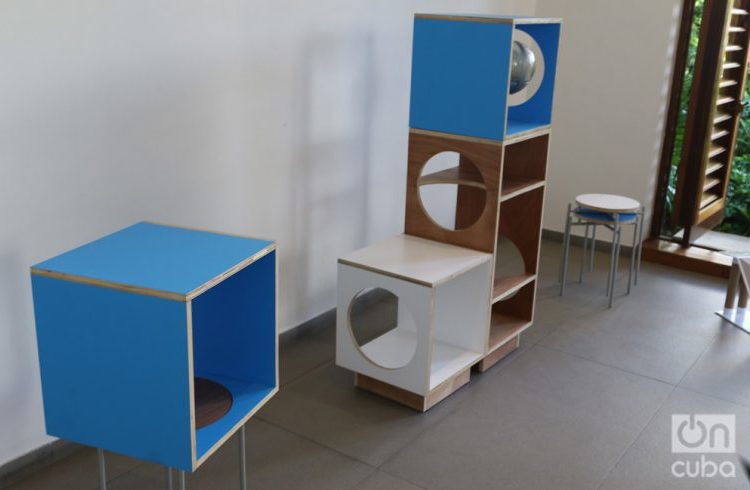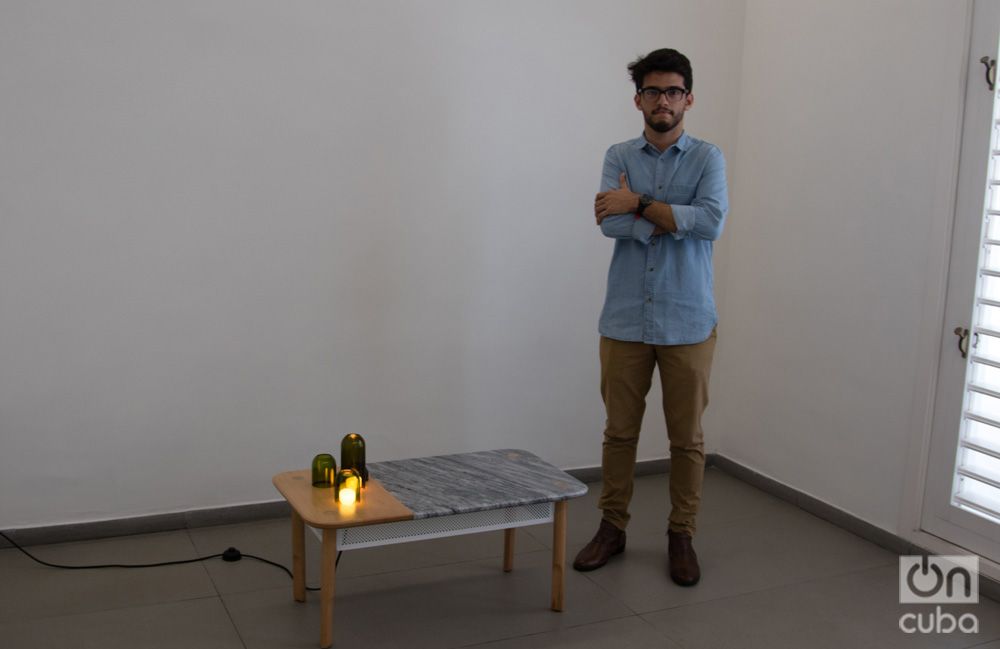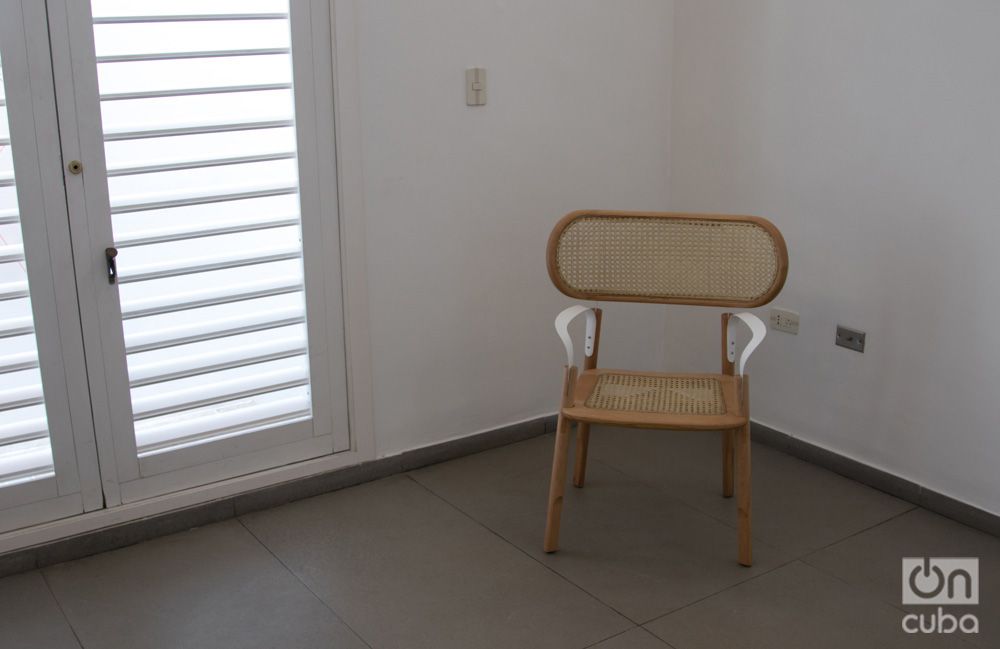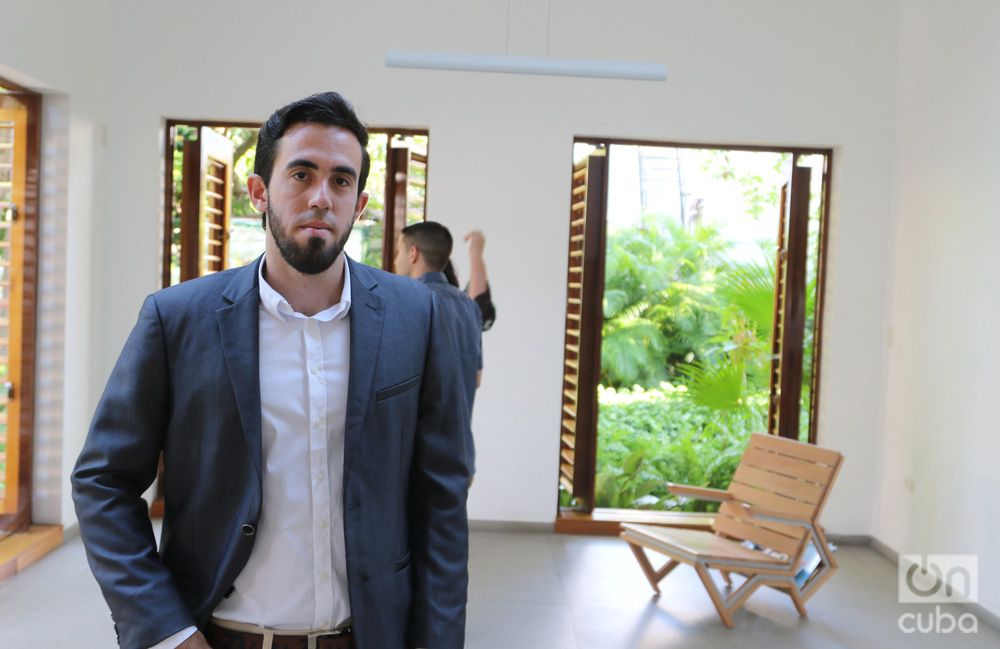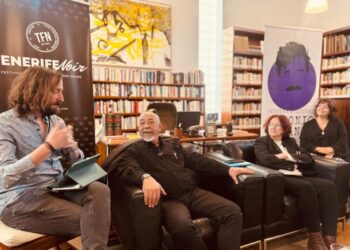A year ago the First International Design Biennial of Havana officially announced the Design Havana Contest to promote on the island the design of ecologically sustainable furniture and lights. The closing date for entries ended on February 28, 2017 with a total of 37 projects of which five finalists and a winner were chosen, recently announced during the 14th Design Week in Cuba.
“The Design Havana Contest is the first step of the EcoArt Project in Cuba. Our goal was to inculcate the ideas of ecological sustainability in all Cuban designers. It also has the aim of interconnecting the design made here with other much more international tendencies and to teach the ecologically sustainable, technological and culturally knowhow,” said Pino Fortunato, president of the jury and executive director of the EcoArt Project, a New York-based institution that works for the combination of sustainable art, design and development.
The lights and pieces of furniture chosen by the jury – made up by experts in design, architecture and style and communication from Italy, Cuba and the United States – were built taking into account the material and supplies chosen, their recycling and the dismantling of the pieces.
The five finalist projects, according to what Fortunato said to OnCuba, were among the proposals that were most in keeping with the quality parameters in design, contemporary use of lines and finish and combination between furniture and lights.
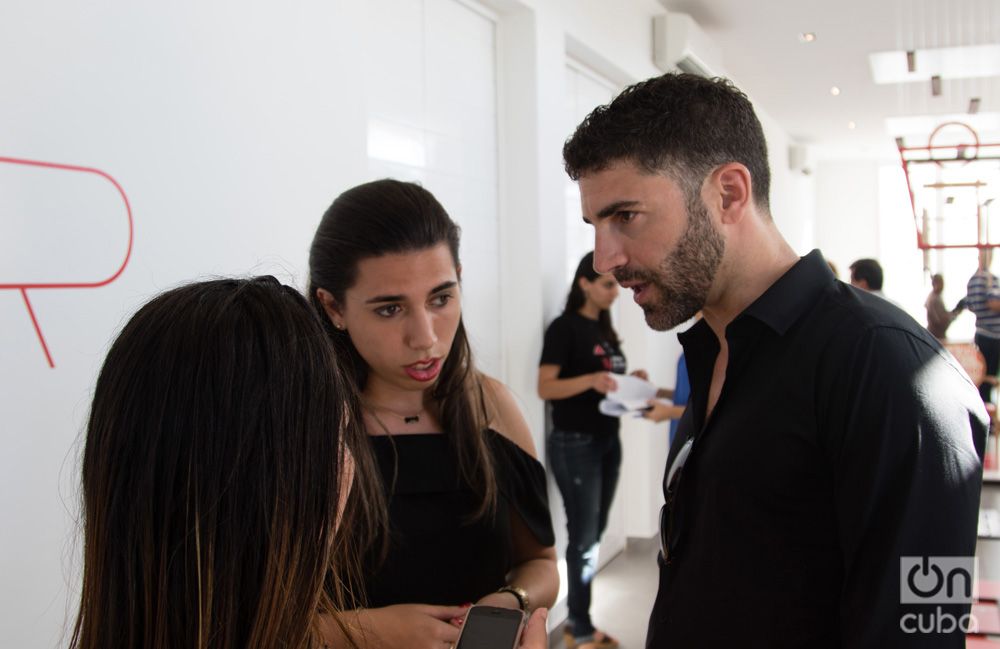
“But we not only took into account the product’s finish but also the concept that is behind the design, everything that comprises the composition, the dialogue and the foundation that backs it. And in addition to the object we analyzed the person, we investigated a bit the contestants’ record to see what they have done until now and to imagine what they could do later,” Pino added.
The contest’s five finalist pieces remain on exhibit since last May 10 in the Lab26 gallery, in El Vedado:
“Franca y mogote,” by Adrián García Álvarez: Table and chair built of Cuban marble with beech wood. It is a combination of both materials. Beech was chosen because it is an inexpensive and easy to assemble type of wood. The bottles that make up the lamps are inspired on the mogotes (round-top hills) characteristic of the landscape in the country’s western region.
“Tumbona de Hormigón Ligero,” by Jorge Gustavo González Boffil: Chair for exterior made from teak wood, which is used in outdoor furniture due to its natural durability in extreme weather conditions. In addition it has a teak varnish that makes it resistant and also light concrete sheets. If the piece breaks it is very easy to reconstruct because it is made using the cast iron method.
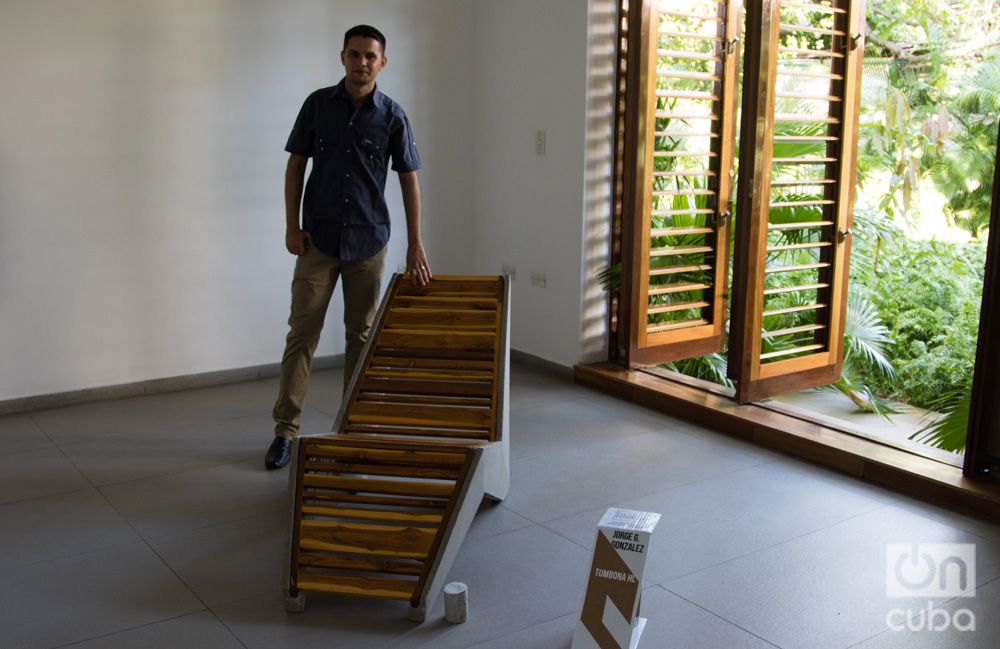
“Cohn,” by Lisandra Buiria Sanabria: Lamp built with mahogany wood pieces. The letters of the piece’s title represent Carbon, Oxygen, Hydrogen and Nitrogen, the principal components of the wood. The author was inspired on the chemical structure of the material, even the layout of the elements of the lamp respond to those compositions and their distribution in the periodic table. It’s fundamentally an artisanal construction, with left-over wooden pieces that were arranged and clued, thus its ecological value.
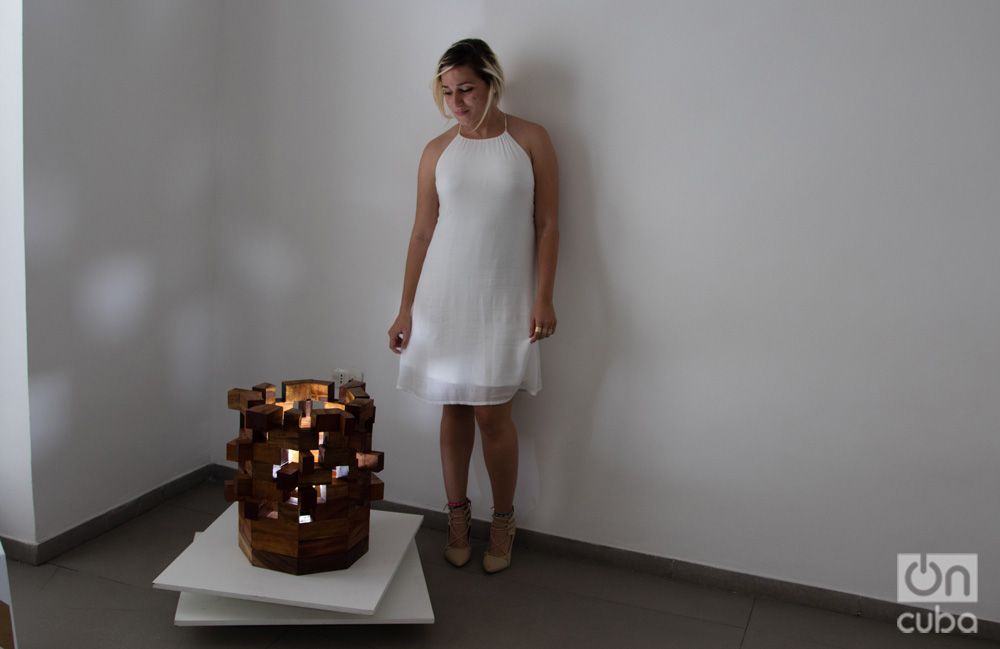
“Sit down,” by Osmay Manuel Cabrera Carrazana: Armchair with bookcase in the back, which functions as the chair’s added value. The fundamental essence of the furniture is that the user feels comfortable and comes into contact with the environment, although it is designed for interiors as well as exteriors. The general structure is made of steel which guarantees safety; therefore the wood only meets an aesthetic function. Built with 23 steel pieces and 43 of wood, of which 29 can be taken from leftovers.
“Cosmos,” by Amalia Martínez Caballero. Multifurniture with interchangeable lamp and stools, totally built with plywood panels. The author’s idea was to build a multifunctional piece and that it could be placed anywhere, but above all thinking of small spaces.
The latter piece was the winner of the first Design Havana Contest. The contest’s prize consists of a residence in Italy, in which Havana designer Amalia Martínez Caballero will receive a personalized design course in Rome and Salandra.
Speaking of the selection of “Cosmos” as the winning work, Amalia spoke of her project’s intentions: “My idea was basically to make the utmost use of the plywood panel. The shape is inspired on the planets, the possibility they have of circling their own axis and some of them of shining. In addition to the stools they reminded me of the Sputniks, the first satellites launched into space by the Soviet Union. Its name comes from that, because the shelves encompass a bit of all that.”
“In addition the plywood panel is completely used; in fact all the pieces that comprise the shelf come from there, even the circular removals made on the furniture are the ones that are later used for the stool’s support. The boxes are all separated so users can place them in diverse ways and accommodate them according to their needs.”
On what style is the design inspired?
I actually was seeking that it be a piece of furniture that did not establish itself visually as part of any specific style, in order for it to last longer, because we are speaking of an ecological piece of furniture and which we want it to last and to have the less possible impact on the environment.
Thus if I make it based on a certain style people copy the idea, purchase it and throw it away. My piece can last in time and is ideal for any space.
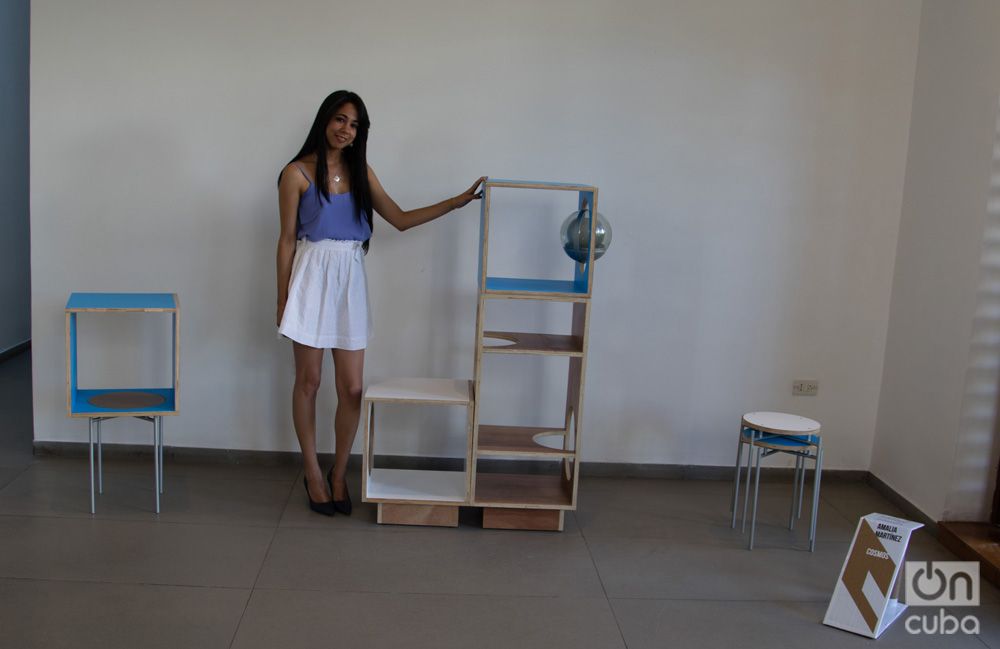
Design Havana, which started off being a workshop of cultural exchange, with its first tangible results has already become the pioneer project of the eco design in Cuba, Fortunato explained. “Our philosophy is to go a step further, not only stay in ideas and concepts but rather to make a reality the pieces of furniture.”
For five days, from May 8 to 12, the 14th Design Week in Cuba took up different spaces in the city, favoring the exchange and promotion of design on the island, highlighting the importance of the Work of Design in the state, cooperative and private sector, how brands are managed and the relation between design and other specialties like communication, the economy and architecture.
The event concluded last Friday in the Hispanic-American Culture Center with the awarding of the Honorary Prize in Design Work to Mirta Muñiz Egea and the 2017 National Prize for Design to Carlos Alberto Masvidal Saavedra.
The latter jury awarded the prize to Masvidal for his more than three decades of professional trajectory as the designer of magazines, books, newspapers, visual identities and publicity campaigns in sites like the magazines Bohemia, Alma Mater, Nuestra América, Revolución y Cultura, Boloña publishers, Gran Caribe and Habanos S.A.


